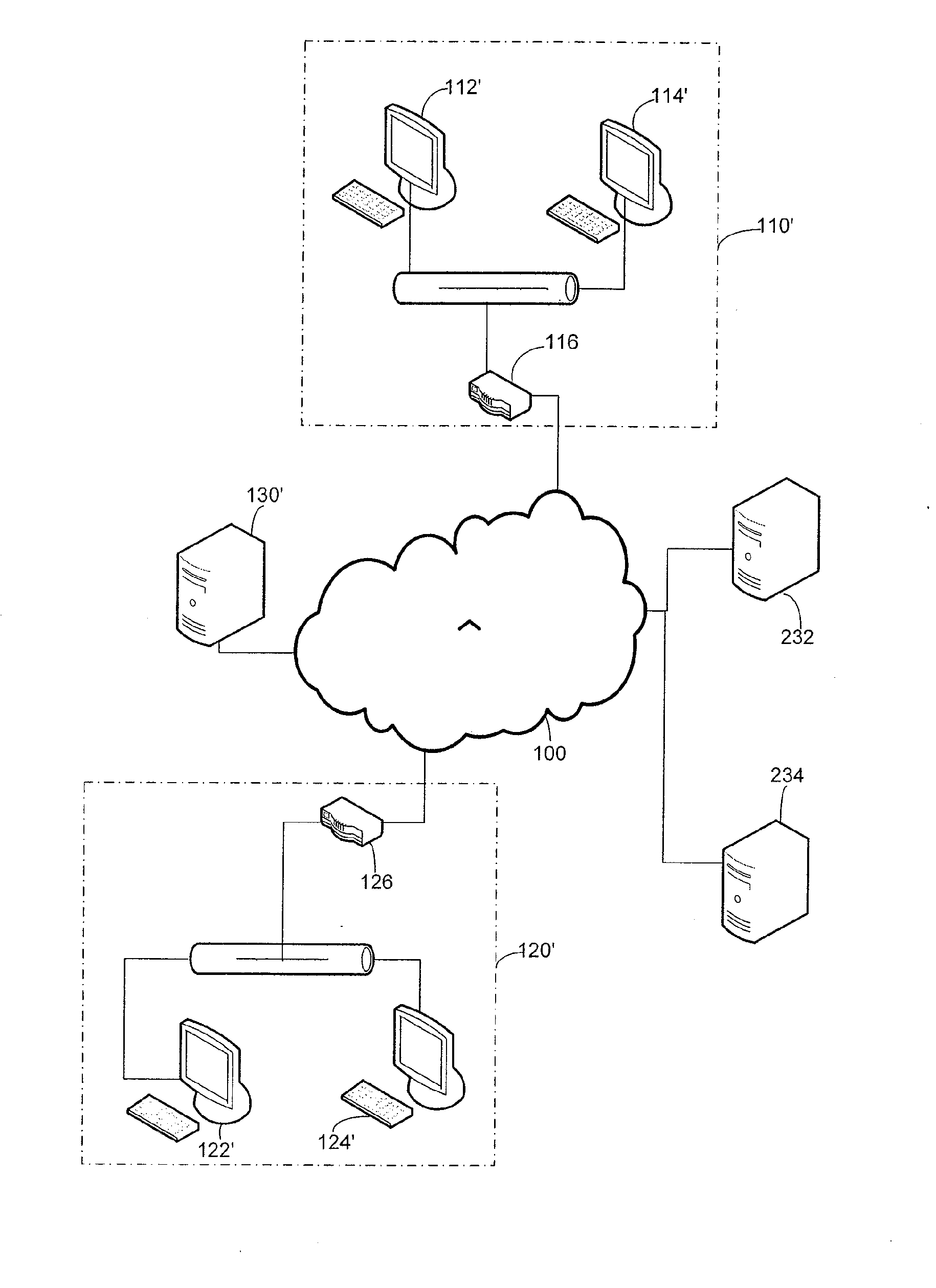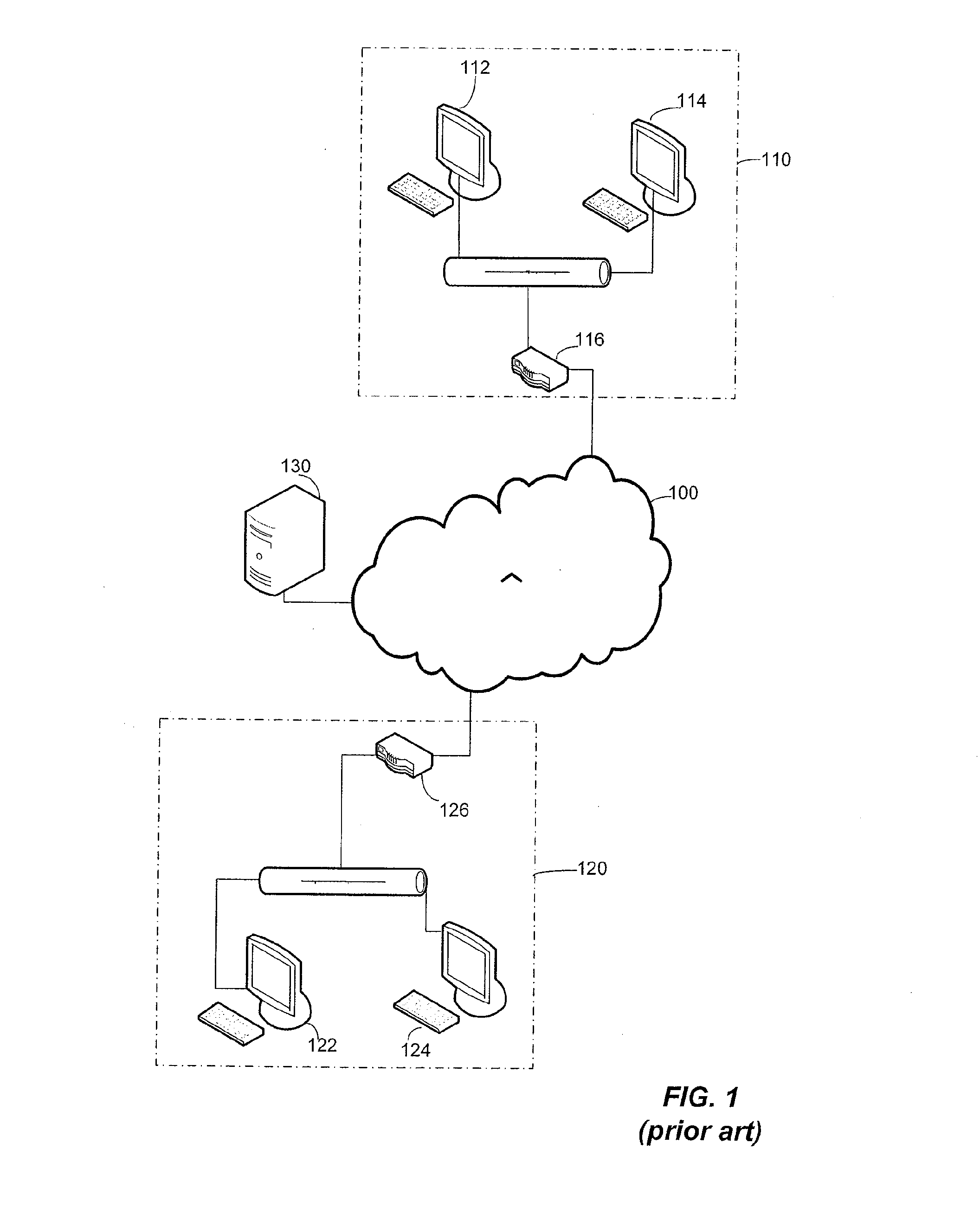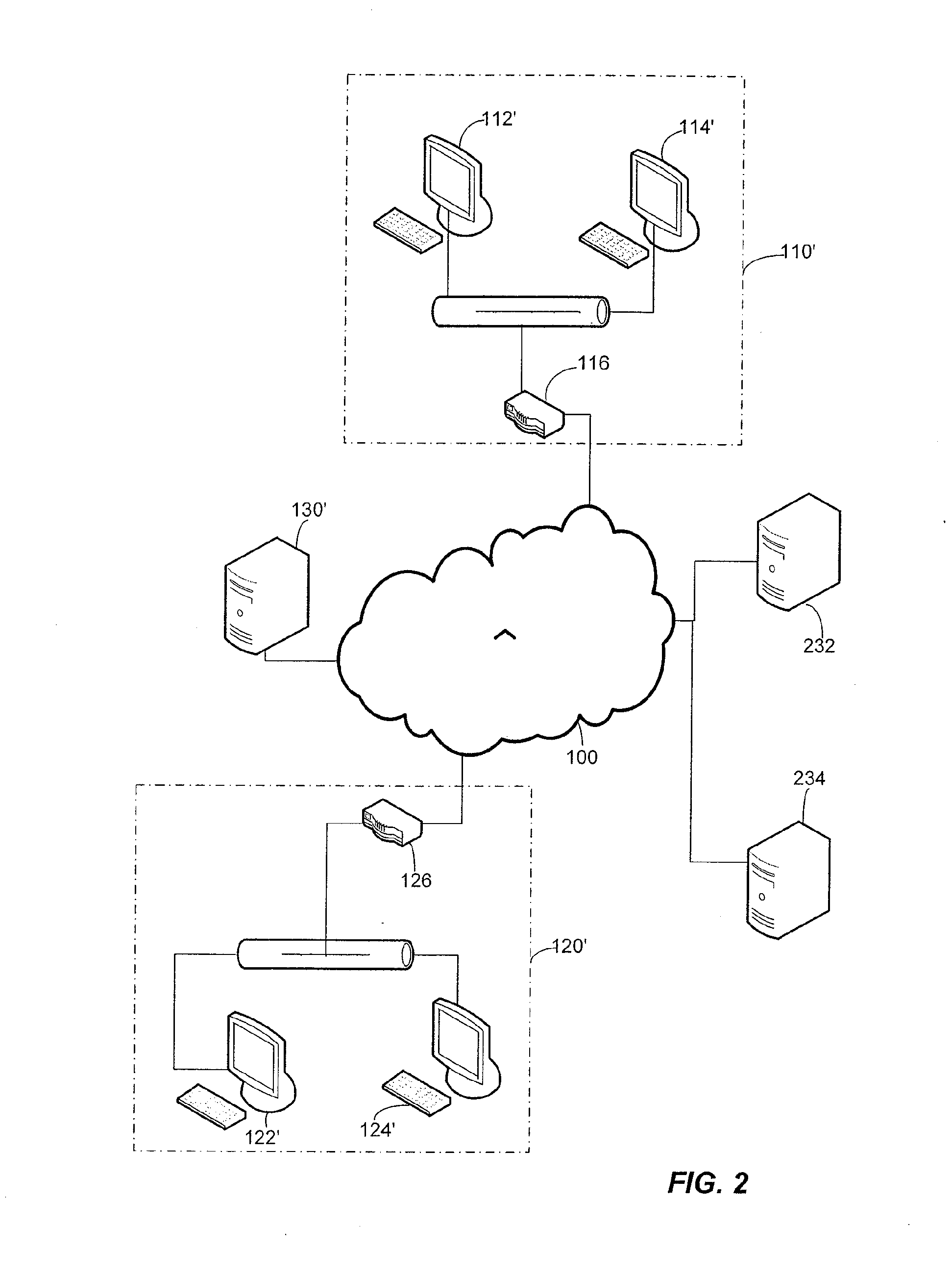Peer-to-peer collaboration system with edge routing
a collaboration system and peer-to-peer technology, applied in the field of peer-to-peer collaboration system with edge routing, can solve the problems of not being able to allow peer devices, interfering with peer-to-peer communication, etc., and achieve the effects of reducing congestion, reducing the load on the relay server, and reducing the cost of a peer-to-peer collaboration system
- Summary
- Abstract
- Description
- Claims
- Application Information
AI Technical Summary
Benefits of technology
Problems solved by technology
Method used
Image
Examples
Embodiment Construction
[0018]The inventors have appreciated that using a relay server to facilitate indirect communication between peers that cannot directly communicate in a collaboration session of a peer-to-peer collaboration system can create an undesirable amount of load around a relay server. As a result, effective operation of a peer-to-peer collaboration system may require an undesirable amount of resources, such as network bandwidth or memory, associated with a relay server. The inventors have also recognized that load, and performance degradation associated with server load, increases as more peer devices are unreachable by other peer devices. One reason that a peer device may be unreachable for direct communication is that the peer may be behind a NAT device. Unfortunately, the likelihood that a peer device is behind a NAT device has increased as more users work from home or are connected to the Internet through local area networks that employ NAT devices.
[0019]According to embodiments of the i...
PUM
 Login to View More
Login to View More Abstract
Description
Claims
Application Information
 Login to View More
Login to View More - R&D
- Intellectual Property
- Life Sciences
- Materials
- Tech Scout
- Unparalleled Data Quality
- Higher Quality Content
- 60% Fewer Hallucinations
Browse by: Latest US Patents, China's latest patents, Technical Efficacy Thesaurus, Application Domain, Technology Topic, Popular Technical Reports.
© 2025 PatSnap. All rights reserved.Legal|Privacy policy|Modern Slavery Act Transparency Statement|Sitemap|About US| Contact US: help@patsnap.com



